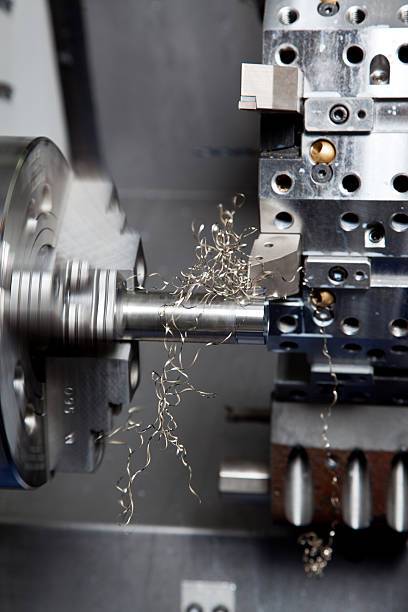
Gears are an integral mechanical device that is an essential part of an engine, allowing the transmission of speed, change of speed and direction of movement. Gears come in different types, from complex to simple, and each type has different specifications and requirements. A complex machine is usually made up of several different gears, but this is not always the case. For example, a simple machine such as a clock is made up of gears that are used to control the speed of the clock hands. This guide takes an in-depth look at gears and the types you can expect to find, the basic parameters of gear design, and the applications of gears. Read on to learn useful tips for making quality gears. Let’s get started
Gears are mechanical parts of machines that consist of meshing gears used to transmit torque and speed. These mechanical elements usually have a cylindrical or conical body with sets of teeth. Transmission occurs when two or more gears work in sync. The transmission of power results in changes in speed and torque. These gears are used in a wide range of industries, from large gears used in marine systems to small gears such as clocks and precision measuring instruments.
Gear design parameters are technical characteristics that are critical to the proper performance and service life of mechanical gears. The following are the basic parameters that need to be considered for effective gear design:
Mechanical gears are generally cylindrical, with the teeth neatly arranged around the gear body. Gear shapes include oval, tapered, triangular and square. Non-circular gears differ from circular gears in that they do not have a constant gear ratio in terms of speed and torque. Non-circular gear types can meet various irregular motion requirements, including reversing and variable speed.
The twist angle is the ratio of the pitch angle of the gear teeth to the cylinder axis. By increasing the twist angle of the gear, a more obvious thrust direction can be obtained. Twist angles of less than 25 degrees are best used to reduce thrust in helical gears.
Teeth are the pointed or spiked surfaces outside the circumference of the gear. The number of teeth and other variables such as pressure angle and modulus are critical in determining the size of the gear. In addition, the number of teeth in a gear design is critical in calculating the gear speed (gear ratio), which is calculated as: number of teeth on the input gear/number of teeth on the output gear.
If the teeth of a gear are on the left side, it is a left-handed gear; if the teeth are on the right side, it is a right-handed gear. Before a pair of bevel or helical gears can transmit power, the two gears that are meshed together must have opposite twist directions. For example, if the teeth of two helical gears move in one direction, they will not mesh. However, spiral gears and worm gears can mesh despite being unidirectional.
There are three variations in gear shaft configuration, including parallel, non-parallel (non-intersecting), and intersecting. Parallel shaft configuration mechanical gears maintain parallel positions with counter-rotating shafts. In contrast, non-parallel shaft gears are tangent in different planes, while intersecting gears intersect in the same plane. In addition, parallel and intersecting gear configurations have higher speeds and efficiencies than non-parallel gears.
The module is the size of the gear teeth in millimeters. Therefore, the module indicates the size of the gear teeth. It is crucial to consider this parameter when working with gear transmission. The module is the value obtained by dividing the pitch diameter of the gear by the number of teeth. The expression is: Module = Pitch diameter / Number of teeth
Mechanical gears go through a series of processes before they can transmit speed and torque. When working with mechanical gears, all you see is two gears meshing to transmit motion. In this section, we’ll explore what’s going on behind the scenes.
First, you should understand that these gears are usually connected to a component called a shaft. The gears rotate along the shaft. The two gears involved in the meshing are usually called the driven gear and the driving gear. When the driving gear starts to rotate, the driven gear provides the resulting rotation relative to the impact of the driving gear. The driven gear meets any rotation generated by the driving gear.
Generally speaking, motion transfer often occurs between the driving gear and the driven gear. This motion transfer causes some gears to move while others change the direction of rotation. However, in machines where gear meshing is required to affect speed and torque, the paired gears can be designed to be different sizes.
Are you looking for a reputable partner for your parts fabrication and machining projects? Look no further. At PROTO MFG, we specialize in CNC machining and related technologies, including sheet metal fabrication, rapid prototyping, etc. Whether it is a project with a simple design or parts with complex geometries, do not hesitate to contact us today!